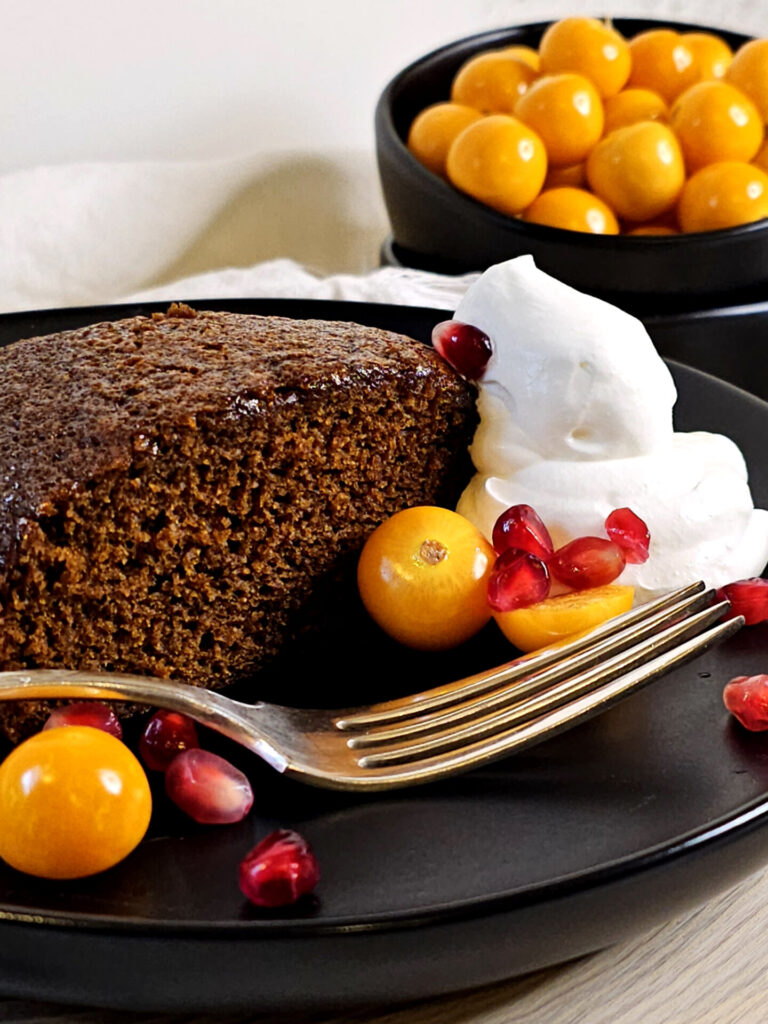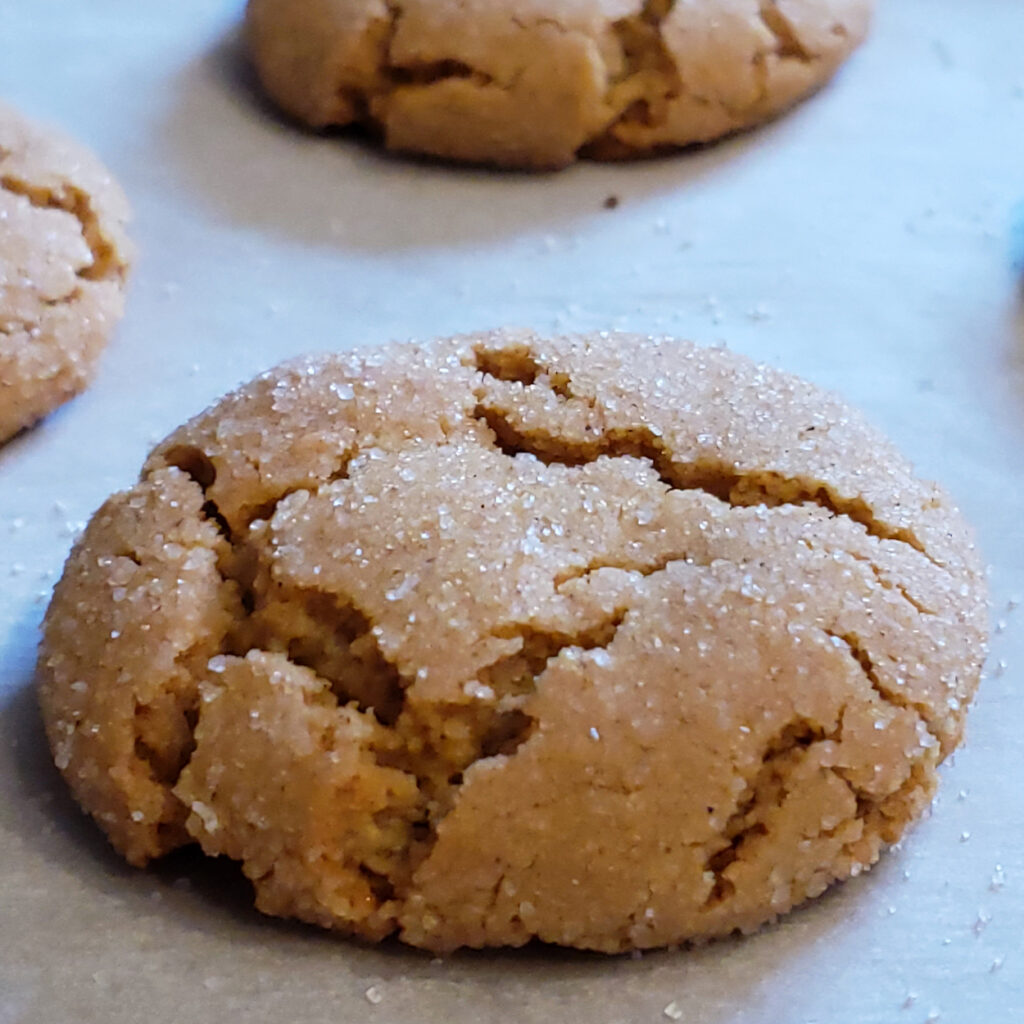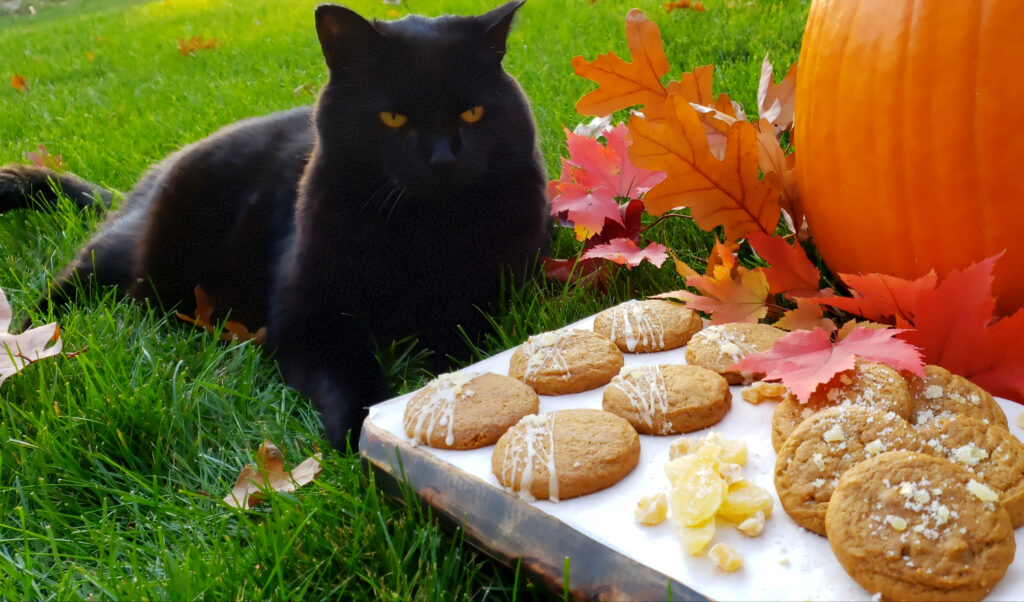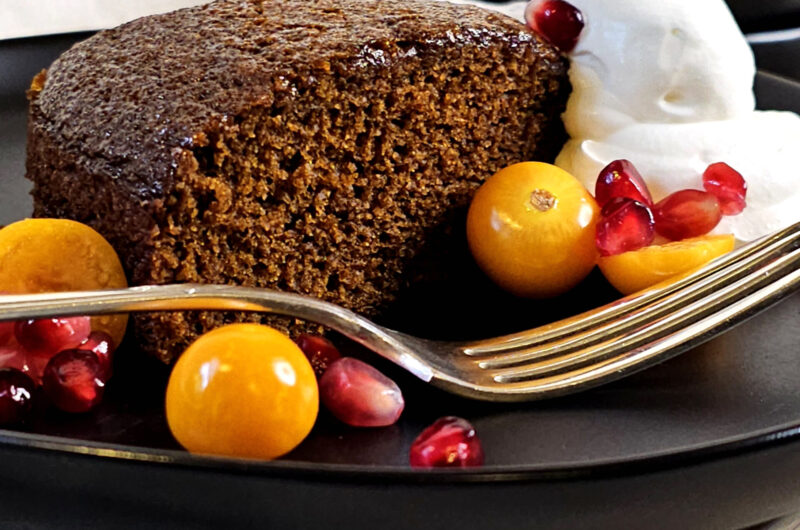The warmth of the holiday season meets the comforting aroma of this freshly baked Festive 5 Star Homemade Gingerbread Cake. This spiced delight is the epitome of winter coziness, perfect for filling your home with the scent of cinnamon, ginger, and molasses.
This is one of those recipes you can whip up with just a mixing bowl and a whisk. And because it comes together in no time at all, you’ll be out of the kitchen and back enjoying the fun and festivities in short time. In this recipe, I’ll guide you through the steps to create a moist and flavorful gingerbread cake that will quickly become a family favorite during the holiday season. So, preheat your oven, grab your apron, and let’s start baking!
Jump to RecipeTable of Contents
Molasses makes this Festive 5 Star Homemade Gingerbread Cake so cozy
Although the history of gingerbread can be traced back to the ancient Greeks and Egyptians, and in Europe as early as the 11th century, today we think of gingerbread as a traditional holiday treat. From cookies and cakes, to architectural masterpieces, the warm spice notes of cinnamon, nutmeg, ginger and molasses are what give gingerbread its signature holiday charm.
In the United States, molasses has a long and rich history in holiday baking. Its use in holiday recipes dates back to the colonial period and has been a staple in traditional American desserts ever since. During the 17th and 18th centuries, it was a vital and readily available sweetener in the American colonies – making it an essential ingredient in early American baking, as white sugar was expensive and scarce. Naturally, molasses offered a deep, rich sweetness that could be used in various holiday treats at reasonable expense.
As time and traditions marched on, molasses continued to play a central role in holiday recipes. Some classic examples include molasses cookies, gingerbread men, and dark, rich fruitcakes. These recipes often made use of molasses both for its flavor and its ability to keep baked goods moist. Gingerbread was one of the earliest and most iconic holiday treats that featured molasses as a key ingredient. Gingerbread cookies, gingerbread houses, and gingerbread cakes were all popular holiday desserts. Molasses provided not only sweetness but also a distinctive flavor that paired perfectly with other spices commonly used in gingerbread recipes.
Molasses-based holiday treats also have cultural significance in several regions of the United States. For example, in New England, molasses cookies are a beloved part of the holiday tradition. In the South, molasses is often used in pecan pies or as a glaze for ham during holiday feasts.
Today, molasses is still an essential ingredient in holiday baking, carrying forward these historic traditions. It adds depth and character to a wide range of festive treats, connecting modern bakers with a rich culinary heritage that spans centuries. Whether it’s a gingerbread cake or a chewy cookie, these holiday classics continue to evoke a sense of nostalgia and comfort, thanks to the enduring use of molasses in their recipes.
An easy winter dessert to cozy up to
I do enjoy fussing in the kitchen. For me, there’s something very satisfying about breaking down complex steps into manageable bites and watching the transformation as simple ingredients come together to create something wonderful and new. However, there are also those times when simple is just as wonderful. I don’t buy into the notion that a recipe has to be complex or technically challenging to be delicious or worth attempting. There are those times when a humble recipe with simple ingredients stands just as tall on taste as any other. In fact, I sometimes enjoy the simple desserts more as they let me focus on taste and texture over aesthetics.
For this recipe, give your heavy equipment a well-deserved rest. You only need a large mixing bowl and a whisk or spatula to mix this cake batter. The dry ingredients are whisked together in the mixing bowl and set aside while the molasses, sugar, butter, water and lemon juice are combined in a small sauce pan over medium-low heat. Once the butter has melted, the sugar dissolved and the mixture has come together, the liquid ingredients are added to the dry and whisked together by hand. Finally, one beaten egg is whisked into the batter, before being transferred to a prepared 8-inch cake pan.
The batter is allowed to rest for a brief 2-3 minutes before transferring it to a baking pan. This brief rest allows the batter to release any excess air bubbles that may have been incorporated and gluten to relax during the mixing process. It also allows the batter to thicken slightly before baking. This brief rest provides structure to the cake and produces a tender crumb.
The batter is then transferred to a prepared cake pan and given one last gentle tap on the counter before placing it in the oven. The cake will bake in a 350 degree F. oven for 30-32 minutes, or until a toothpick inserted into the center of the cake comes out clean. Because each oven is a little different, I recommend doing a quick peek at your cake at the 25 minute mark and reassessing the remaining time needed.
Once the cake has cooled completely, the cake is removed from the cake pan by first running a knife along the edges of the pan to loosen any areas of the cake that may still be sticking. To remove the cake, start by inverting it on a plate and then flipping it once more onto a serving plate.
A simple dusting of powdered sugar is all this cake needs to finish it. However, if you really want to jazz it up, serve with a dollop of lightly sweetened whipped cream and fresh orange or blood orange segments for an elegant and beautiful dessert. Gooseberries and pomegranate arils add a nice touch to this Festive 5 Star Homemade Gingerbread Cake as well.
Other delicious winter desserts to try
I woke up one cold February day with a fierce craving for a molasses cookie. It was one of those cold, snowy weekend days when you only go outside to clear the snow from your driveway. It was the perfect day for baking cookies – molasses cookies. You know the type – boldly spiced, chewy and absolutely delicious with a cup of tea. As I began gathering my ingredients on the counter, I soon realize I didn’t have any molasses in the pantry. That didn’t concern me too much though since I have an overflow shelf where I keep backup stock of pantry staples – with baking supplies taking up the greatest slice of real estate on the shelf. No surprise there, right?
Naturally, I calmly looked around, fully expecting to find molasses, but I didn’t even have a backup jar there. That’s about the time shock and disappointment set in.
After checking and rechecking both places once more, I finally accepted the fact there was no molasses to be found in the house. And then I noticed the jar of Sorghum syrup that was sitting patiently off to the side, just waiting to catch my eye. I love happy accidents. That day, I substituted Sorghum syrup for molasses and what resulted was a new recipe for Brown Butter Sorghum Cookies. If you’re looking for a recipe that can easily flex to being either a dark molasses cookie or a lighter colored Sorghum cookie, this recipe ticks all the boxes.
However, if you prefer a soft gingerbread, then you’re going to want to give this recipe for Easy Triple Ginger Cookies a try. This recipe features, fresh grated ginger, crystalized ginger and ground ginger powder along with just the right blend of molasses and other warm spices.
Holiday recipes to last all season
As you take your first bite of this “Festive 5-Star Homemade Gingerbread Cake,” you’ll be transported to a world of sweet, spiced bliss. The combination of rich molasses and warm spices creates a symphony of flavors that perfectly captures the essence of the holiday season. Whether you’re serving this cake at a festive gathering or simply indulging in a cozy night at home, this simple dessert is sure to bring smiles and warmth to everyone’s heart.
Happy baking, and may your holiday season be filled with love, joy, and, of course, this delicious gingerbread cake!
Festive 5-Star Homemade Gingerbread Cake
Course: DessertCuisine: AmericanDifficulty: Easy8
servings15
minutes30
minutesWarm spice notes of cinnamon, nutmeg, ginger and molasses are what give gingerbread its signature holiday charm.
Ingredients
1 1/2 cups A.P. flour
1 tsp. ground cinnamon
1 1/2 tsp. ground ginger
1/2 tsp. kosher salt
1/2 tsp. baking powder
1/2 tsp. baking soda
1/2 cup (1 stick) unsalted European-style butter
1/2 cup packed light brown sugar
1/2 cup dark molasses
1/2 cup hot water
1 Tbsp. fresh lemon juice
1 large egg, beaten
Directions
- Preheat oven to 350 degrees F. Prepare an 8-inch round cake pan by spraying the sides with nonstick cooking spray and lining the bottom of the pan with parchment cut in a circle to fit the bottom of the pan. Set aside.
- In a large mixing bowl, whisk together the flour, cinnamon, ginger, salt, baking powder and baking soda. Set aside.
- In a small saucepan, combine the butter, brown sugar, molasses, water and lemon juice. Over medium low heat, stir until the butter has melted and all the ingredients are incorporated together.
- Add the liquid mixture to the flour mixture and gently whisk together until just incorporated, but don’t overwork.
- Add the egg to the cake batter and whisk until completely combined. Allow the batter to rest for 2-3 minutes to allow air bubbles to escape. The batter will thicken slightly during this brief rest period.
- Transfer the batter to the prepared cake pan. Give the pan a gentle tap to release any remaining air bubbles and place in the oven. Bake at 350 degrees F. for 30-32 minutes or until a toothpick inserted in the center comes out clean.
- Remove from the oven and allow to cool in the pan.
- Once the cake has cooled, run a paring knife along the inside rim of the pan to loosen the edges of the cake from the pan. Place a plate on top of the cake pan and invert the pan so that the bottom of the cake pan is facing up.
Gently remove the cake pan from the cake so that the bottom of the cake is exposed. If the parchment paper is still in contact with the bottom of the cake, peel it away.
Place a serving plate directly over the bottom of the cake and invert the cake again, so that the bottom of the cake is in contact with the surface of the serving plate. Remove the first plate. - Serve and enjoy. You can lightly dust the top of the gingerbread cake with powdered sugar or serve with a dollop of whipped cream and fresh, tart citrus, gooseberries or pomegranate arils.



























